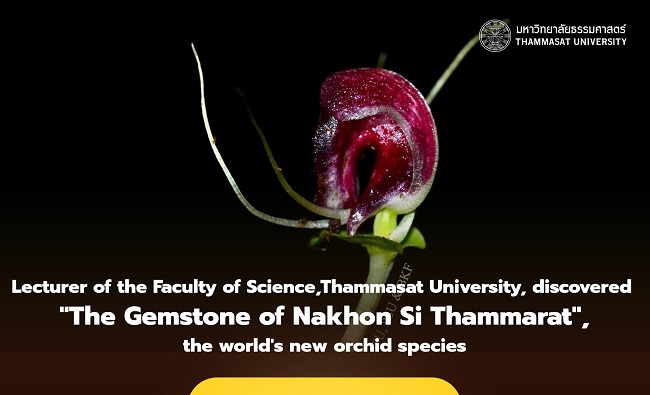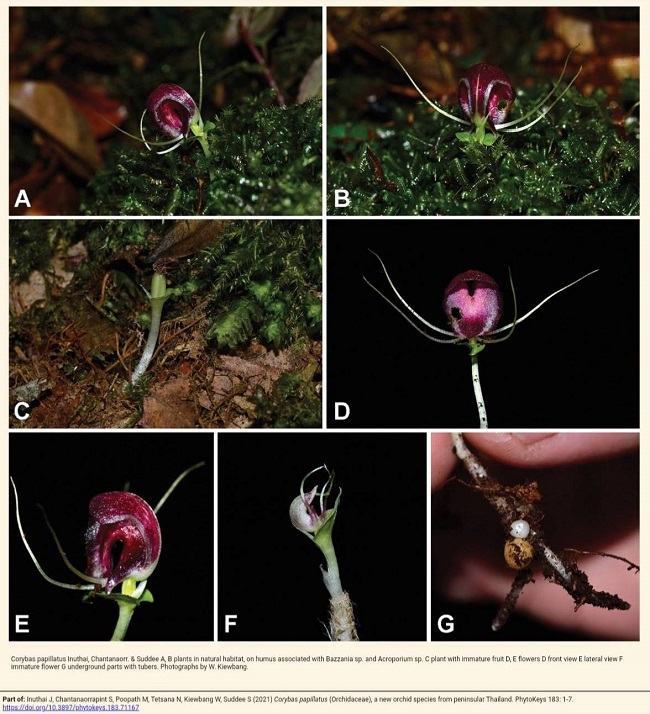Lecturer of Thammasat University, and member of the research team discovered "The Gemstone of Nakhon Si Thammarat"
Prof. Dr. Janejaree Inuthai from Faculty of Science and Technology, Thammasat University discovered the world's new orchid species.
Wednesday 20 October 2021

This research is the discovery of the world new orchid species in the Corybas Salisb. genus having Prof. Dr. Janejaree Inuthai from the Department of Biotechnology, Faculty of Science and Technology, Thammasat University as a member of the research team together with Assoc. Prof. Dr. Sahat Chantanaorapin, Department of Biological Sciences, Faculty of Science, Prince of Songkla University; Dr. Somran Suddee, Forest Botany Group Forest and Plant Conservation Research Office, Department of National Parks, Wildlife and Plant Conservation; Dr. Naiyana Tessana, Forest Botany Work Group, Forest and Plant Conservation Research Office, Department of National Parks, Wildlife and Plant Conservation; Mr. Manop Phophat, Forest Botany Work Group, Forest and Plant Conservation Research Office, Department of National Parks, Wildlife and Plant Conservation and; Mr. Wittawat Khiaobang, Forest Economics Division, Royal Forest Department, which has been published in the PhytoKeys journals.

This new species of orchid is called “The Gemstone of Nakhon Si Thammarat” or Corybas papillatus Inuthai, Chantanaorr. & Suddee in the Corybas genus or a small soil orchid. At present, there are approximately 120 species propagated in India, southern China, southern Thailand, Malaysia, New Zealand and the Western Pacific Islands Region.
The title ‘Corybas papillatus’ is named after the papillae that appear on the posterior half of the dorsal sepal. This orchid is similar to Corybas villosus J. Dransf. & Gord. Sm. and Corybas ridleyanus Schltr. However, C. papillatus differs from the two aforementioned orchids in that the base of the lateral calyx connects to the lateral lobe, and that C. villosus has ridged upper calyx back. C. ridleyanus has a truncated upper calyx which is clearly different from the new species.

Prof. Dr. Janejaree Inuthai from the Department of Biotechnology, Faculty of Science and Technology, Thammasat University revealed that the new orchid species is a species at critical risk of extinction (Critically Endangered) according to IUCN guidelines. However, since this new species of orchid is very small, this allow them to escape from the sight of the explorer. Currently, only 4 plants of this orchid species have been found and is from only one area that is Khao Luang, Khao Luang National Park, Nakhon Si Thammarat Province. It was discovered only once in the 2018 survey and sample collection.
In the past, there have been continuous reports of the discovery of the world and Thailand new orchid species from the Nakhon Si Thammarat mountain range. This shows that the southern region of the country is an important region in terms of Thailand orchid diversity.